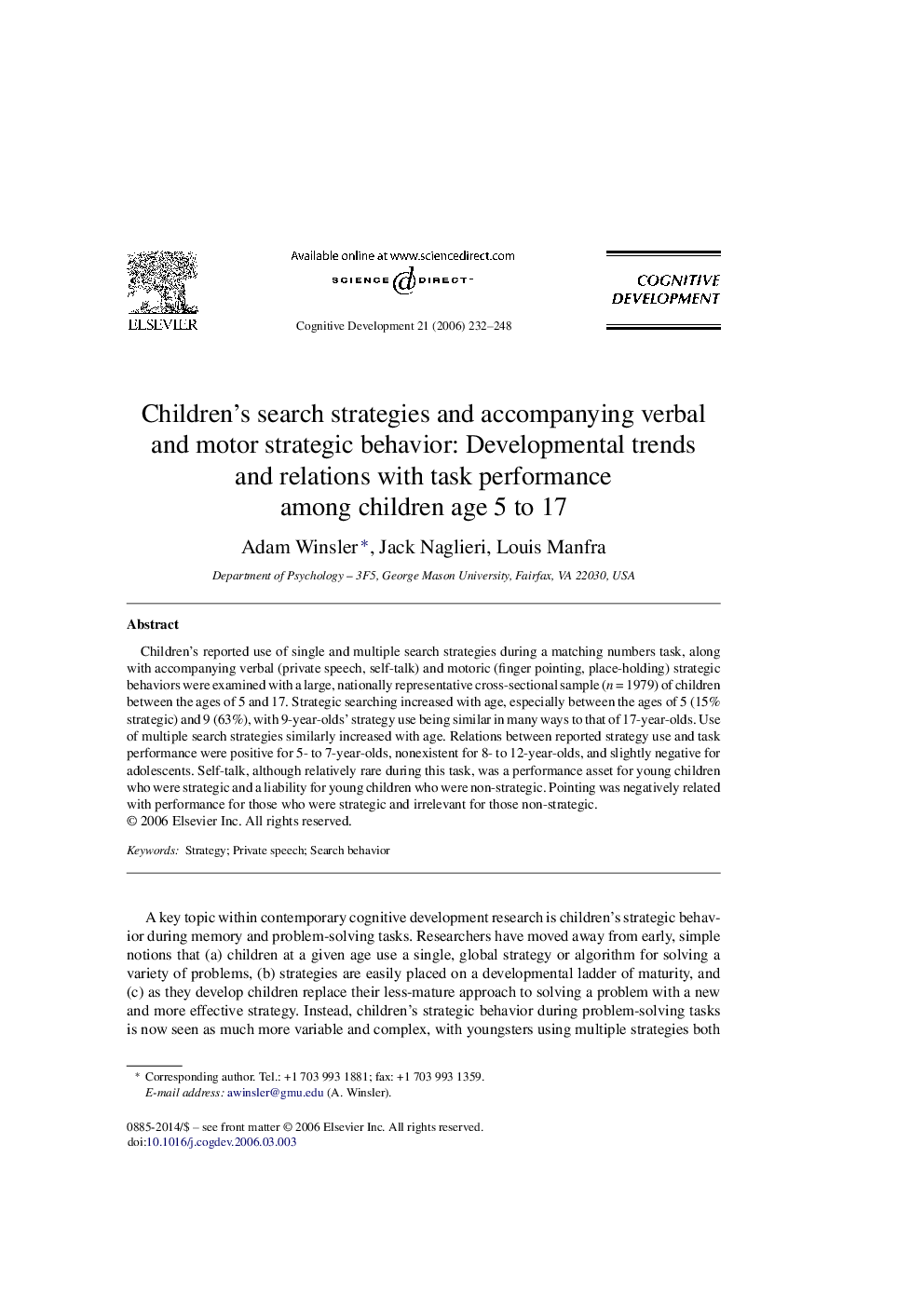| Article ID | Journal | Published Year | Pages | File Type |
|---|---|---|---|---|
| 916786 | Cognitive Development | 2006 | 17 Pages |
Children's reported use of single and multiple search strategies during a matching numbers task, along with accompanying verbal (private speech, self-talk) and motoric (finger pointing, place-holding) strategic behaviors were examined with a large, nationally representative cross-sectional sample (n = 1979) of children between the ages of 5 and 17. Strategic searching increased with age, especially between the ages of 5 (15% strategic) and 9 (63%), with 9-year-olds’ strategy use being similar in many ways to that of 17-year-olds. Use of multiple search strategies similarly increased with age. Relations between reported strategy use and task performance were positive for 5- to 7-year-olds, nonexistent for 8- to 12-year-olds, and slightly negative for adolescents. Self-talk, although relatively rare during this task, was a performance asset for young children who were strategic and a liability for young children who were non-strategic. Pointing was negatively related with performance for those who were strategic and irrelevant for those non-strategic.
